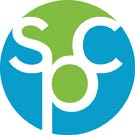Communicating the recycling message is harder than it seems
|
A toothbrush currently in stores comes in a clamshell with an optimistic label that reads, "recyclable packaging materials." Unfortunately, the majority of the material in the package is not currently collected in most communities, reducing this to a misleading claim. Inaccurate claims such as this abound in the marketplace. However, most aren't intentional and many are sincere efforts to try to promote recycling. So why is it so hard to communicate to consumers about recycling?
Recycling starts at the local level. The reach of collection infrastructure (how many households have access and the type, curbside, dropoff, single-stream, three-bin), is determined and paid for by municipal and local governments.
Predictably, there is a tremendous amount of variation from locality to locality. The lack of harmonization in the collection system poses a significant challenge to developing a consumer label that is relevant for all localities and materials.
Compounding this is the fact that a recyclability claim, like "Please Recycle," should only be made if a "substantial majority" of people have access to recycling for that type of package, according to the Federal Trade Commission. Yet determining this is exceptionally difficult, as there is no national or harmonized source for recycling "reach" data in order to substantiate recyclability claims. While some industry associations do collect data, it's limited to selected materials or forms and is not comprehensive. As a consequence, many companies find it difficult to use the most basic and well-intentioned claim of, "Please Recycle." So, what can we tell consumers about the recyclability of a package? In the U.K., the Waste and Resources Action Programme (WRAP), in partnership with retailers like Marks & Spencer and ASDA, provides a model. Its program elements include:
A label with instructions broken down into three categories—"widely recycled," "check local recycling" and "currently nonrecyclable."
A data-collection effort to validate the three label categories for all materials.
A website with a search of local recycling facilities by material and postal code to support the "check local recycling" claim.
The label addresses the underlying variability in collection schemes and can be applicable to all materials. The Sustainable Packaging Coalition's Labeling Project helps provide meaningful consumer guidance on what to do with a package after its useful life. After reviewing labels and collections systems from around the world, we have focused on recycling and are working to design a label that draws on the successful elements of the WRAP model. Our goal is to offer consistent messaging to encourage participation and to incentivize better infrastructure. We'll introduce our concept this spring and invite review and testing. And, GreenBlue and the SPC have initiated some conversations about how to start a national campaign to collect better recycling data that would be made available publicly and be used to substantiate recyclability claims. We're seeking partners willing to help make this aspiration a reality.
Author Information: Anne Johnson is the director and Anne Bedarf a project manager for the Sustainable Packaging Coalition, a project of GreenBlue (www.greenblue.org). For additional information, visitwww.sustainablepackaging.org.
About the Author(s)
You May Also Like



